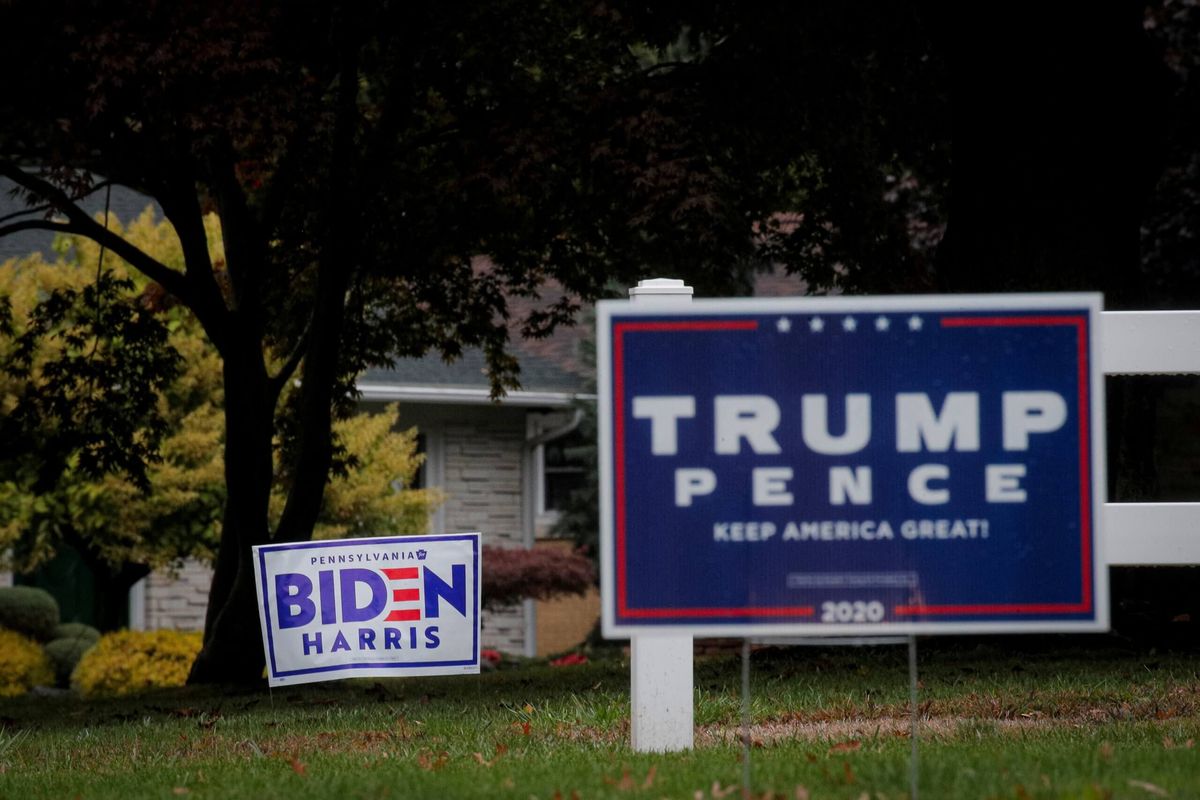While early voting favors Biden, Republicans may vote in greater numbers on Election Day

A few minutes every morning is all you need.
Stay up to date on the world's Headlines and Human Stories. It's fun, it's factual, it's fluff-free.
Even the Biden campaign, rather than boasting of its strong showing, is warning his supporters, “Donald Trump can still win this race.”
In the weeks leading up to Election Day in the United States, the Democratic Party has been the recipient of good news in the form of a multitude of strong polls and early voting numbers. Even as President Donald Trump and the Republicans have hoped to blunt former Vice President Joe Biden’s momentum with the email scandal of his son, Hunter, the Democratic candidate looks well positioned for November.
Nonetheless, Democrats are not counting their chickens, not with memories of 2016’s surprise defeat still fresh in their memories. Many election watchers have asserted that polls can’t be trusted, in part due to supposed shy Trump voters lying or not speaking to pollsters. Higher registration rates among Republicans are also a reason to suspect the final vote total could be tighter than polling implies.
While Biden is likely to hold a lead going into November 3, people voting on Election Day itself will probably be overwhelmingly Republican. For that reason, election prognosticators expect Election Day totals to erase much, if not all, of Biden’s early voting lead.
Record-breaking early voting
With the COVID-19 pandemic coinciding with an election year, a substantial number of voters have been seeking alternative ways to cast their vote rather than showing up on Election Day. In response, most states have sought to make early voting – by mail or in person – easier. The result has been an unprecedented number of votes being cast early across multiple states.
The US Elections Project, a nonpartisan website created by Professor Michael McDonald of the University of Florida, tracks early voting totals, with comparisons to 2016. Multiple states look poised to blow away 2016 early voting totals, in large part due to a surge of mail-in voting.
As of October 22, the Florida vote total was equal to 40.9% of all votes cast early in 2016. With a full 12 days of early voting left, 3.92 million votes had already been cast, with 1.81 million from registered Democrats, 1.3 million from registered Republicans and another 756,000 from voters with no party affiliation. More than three-fourths of those votes were mail-in ballots.
As of October 21, 5.3 million people – 31% of all registered voters – had voted in Texas. That included 801,000 votes in Harris County alone, which is where the state’s most populous city, Houston, is located. For the state, that was equal to 65.5% of 2016’s entire early voting total and for Harris County, it was 93% of 2016’s total. In-person voting has accounted for most of those votes.
A voter turnout greater than 50% of 2016’s total has also been seen in Montana, New Jersey, North Carolina and Vermont.
Across the country, 51 million people had reportedly voted by October 23. By comparison, 138 million people in total voted in the 2016 election.
This high voter turnout ahead of Election Day has led to speculation that 2020 could shatter past voting records in a country that routinely votes at a lower percentage than most other developed countries. Traditionally, higher voter turnout has been considered a good sign for Democrats because its base of young voters and people of color are two groups that traditionally don’t vote in high numbers.
Additionally, The Washington Post reported on October 14 that in many states that are especially valuable for winning the electoral college, registered Democrats have outnumbered registered Republicans by as much as 2 to 1.
Joe Biden’s lead in the polls
The prevailing election story in recent months has been Biden’s consistent lead over Trump in the polls. According to FiveThirtyEight’s national poll aggregator, the closest Biden and Trump have ever been in 2020 was a 3.4 point lead for Biden back in early April. Since then, Biden has steadily built his lead. He entered October with an aggregate lead of 8.2 points. On October 21, it was 9.9 points.
National polls are not the whole story, as it is possible to gain the most votes across the nation and lose the election – as former Secretary of State Hillary Clinton did in 2016. Trump’s electoral college victory that year came as a shock to many people. Per FiveThirtyEight’s own preelection prediction, though, Trump had a 28.6% chance of winning.
State polls provide a better idea of how the election is shaping up and in that category, Trump still hasn’t received much good news lately. In Florida, Pennsylvania and Georgia, three states Trump needs in order to win (he won all three in 2016), the president is currently trailing Biden in aggregate polling.
Texas, in which Trump holds a less than 1% aggregate polling lead, is also looking like a tossup. If Biden were to win it, something some pundits think is possible, Trump’s path to victory would be all but blocked. The most recent Quinnipiac University poll, among the top-rated pollsters, shows the two candidates tied. The last Democrat to win Texas was Jimmy Carter in 1976.
Republican silver linings
If the news seems to favor Democrats, there are some quiet developments that indicate Trump and the Republicans could have reason to celebrate on November 3.
The first indication that Trump may have a better showing than polls predict is the stronger than expected Republican registration efforts. Throughout 2020, Republican voter registration has outstripped Democrats, particularly in Florida, North Carolina and Pennsylvania. In all three, the number of Republicans registering to vote since the states’ primaries has more than doubled that of Democrats.
Furthermore, there is one very good reason to expect Republicans will vote in far greater numbers on Election Day than Democrats: the president’s strong opposition to mail-in voting. Trump has regularly voiced concerns about mail-in voting, even going so far as to say he would only commit to a peaceful transfer of power if they “[got] rid of the ballots.”
As Business Insider reports: “In the 15 states that are reporting returned mail ballots by party registration, the data compiled by the US Elections Project shows that Democrats requesting mail ballots at higher rates than Republicans and returning their ballots at higher rates.”
As such, it is expected that Biden and Democratic candidates could notch a substantial lead going into Election Day, only to watch their lead dissipate as the day progresses.That reality, coupled with the results of the 2016 election, are why Democrats don’t trust the polls or any other positive signs. Even the Biden campaign, rather than boasting of its strong showing, is warning his supporters, “Donald Trump can still win this race.”
Have a tip or story? Get in touch with our reporters at tips@themilsource.com




Comments ()